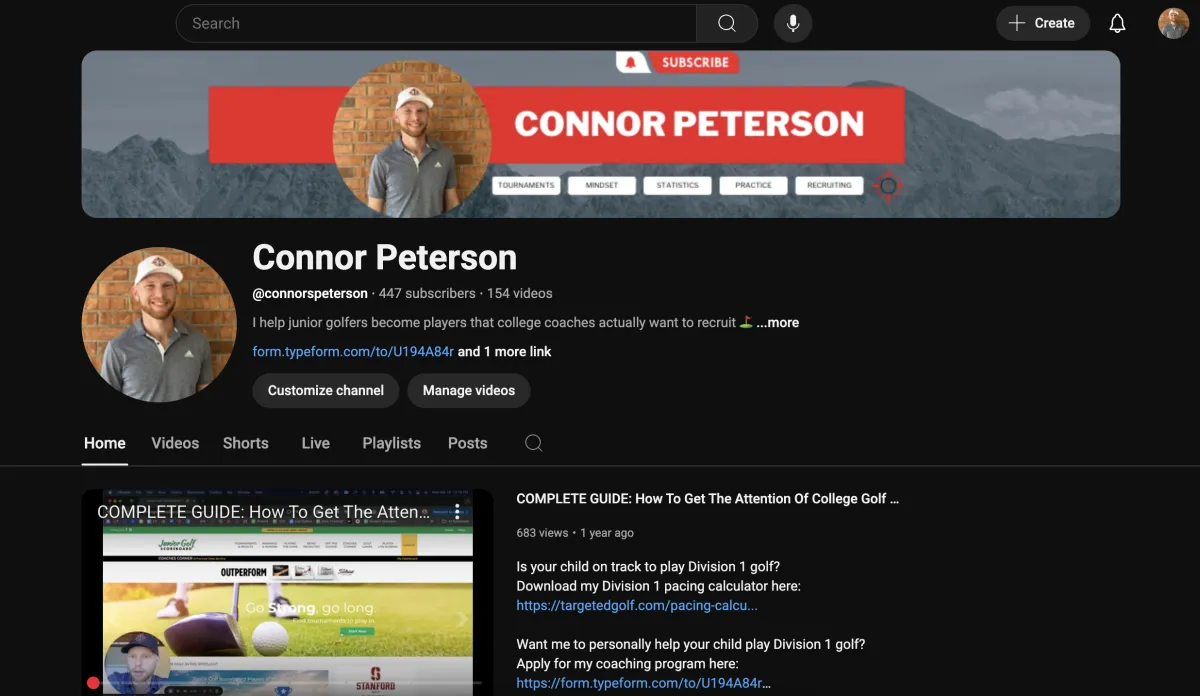
I'll build your junior golfer a custom roadmap to Division 1 golf
I'll tell them exactly which tournaments to play in, how often to play vs practice, which drills to do, how many balls to hit, and exactly what they need to do to play Division 1 golf
Program Statistics:
4.3
Students who follow this program improve by 4.34 shots per year
367%
My students improve 367% faster than average (source: Junior Golf Scoreboard)
81%
81% of the ranked players following the program are on track to play Division 1 golf
5
I've helped 5 junior golfer get recruited to play Division 1 golf in the past 2 years
I'll build your junior golfer a custom roadmap to Division 1 golf
I'll tell them exactly which tournaments to play in, how often to play vs practice, which drills to do, how many balls to hit, and exactly what they need to do to play Division 1 golf
Program Statistics:
4.3
Students who follow this program improve by 4.34 shots per year
367%
My students improve 367% faster than average (source: Junior Golf Scoreboard)
81%
81% of the ranked players following the program are on track to play Division 1 golf
5
I've helped 5 junior golfer get recruited to play Division 1 golf in the past 2 years
My Approach & Background

Most junior golf instruction is made up of swing mechanics instruction. But if you've had much experience in golf, you know there's a lot more that goes into scoring than just a good golf swing. I learned this the hard way as a late start junior golfer.
I started playing golf when I was 16, I was scratch by the time I was 17, and everyone told me I should try to play college golf. But I didn't know any of the things I know today. And so I did all the things most players do.
I got a really good swing coach, grinded on my swing non stop, and had no idea what scores I actually needed to shoot, where I needed to shoot them, or how to develop my game.
Surprise surprise - like the other 98.4% of junior golfers, I didn't get recruited.
I thought it was simply because I wasn't good enough.
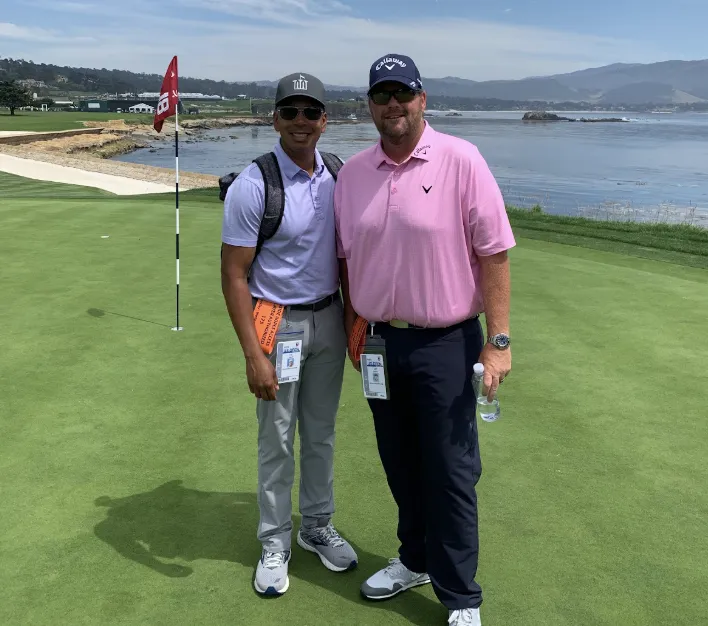
It wasn't until later in life where I started working with my golf mentor Jeff Smith (who worked with about 6 players on the PGA Tour) and TD Luten (who was the assistant coach at Duke for 4.5 years) that I learned how recruiting really worked.
Long story short - by virtue of their track record of developing great college recruits, Jeff and TD could directly reach out to college programs to get eyes on the players they were working with.
We could get face time with coaches but soon found out that if they player wasn't ranked well enough, the programs the players were interested in wouldn't give them any attention.
Because of this, I did a deep dive into rankings.
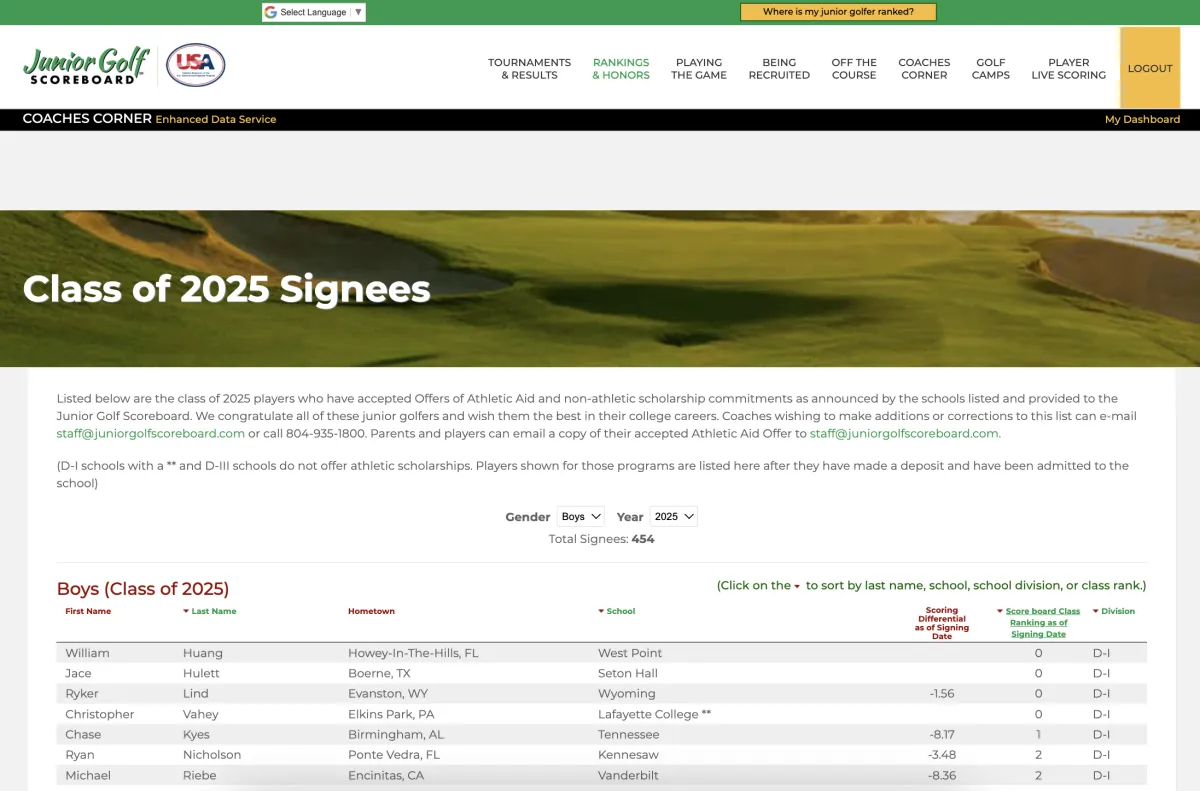
Rankings might sound scary but they're actually really helpful for everyone. College coaches use them to determine the players they want to recruit - kind of like Google but for recruiting.
Normally people think rankings are political but that couldn't be farther from the truth. The majority of a players ranking on Junior Golf Scoreboard is their scoring differential (the relationship between their average scores and the difficulty of the golf courses they played).
If your child shoots better scores, on harder golf courses, they will be ranked better.
As a result - now I do two things with students:
#1 - Build their tournament schedule so they're playing in the right events based on their skill level.
#2 - Help them strategically lower their scoring average by tracking their stats, and building their practice, strategy, and mindset based on those stats.
Applying these principles we helped 5 players get recruited from 2021 to 2023
Since then I've developed this process into a repeatable system and helped another 5 players get recruited.
The programs were: Texas Tech, Virginia, Williams, Barry, Memphis, UCONN, Loyola Maryland, UCLA, William & Mary, and Villanova.
How My Program Works
Step 1: Getting Ranked
The foundation of getting recruited is being ranked. It accomplishes three things.
#1 It shows you objectively where your child is at vs everyone else - no room for delusion.
#2 It makes it easy to track progress over time. If your ranking isn't improving, you're not improving.
#3 When you're ranked high enough, coaches will reach out to you.
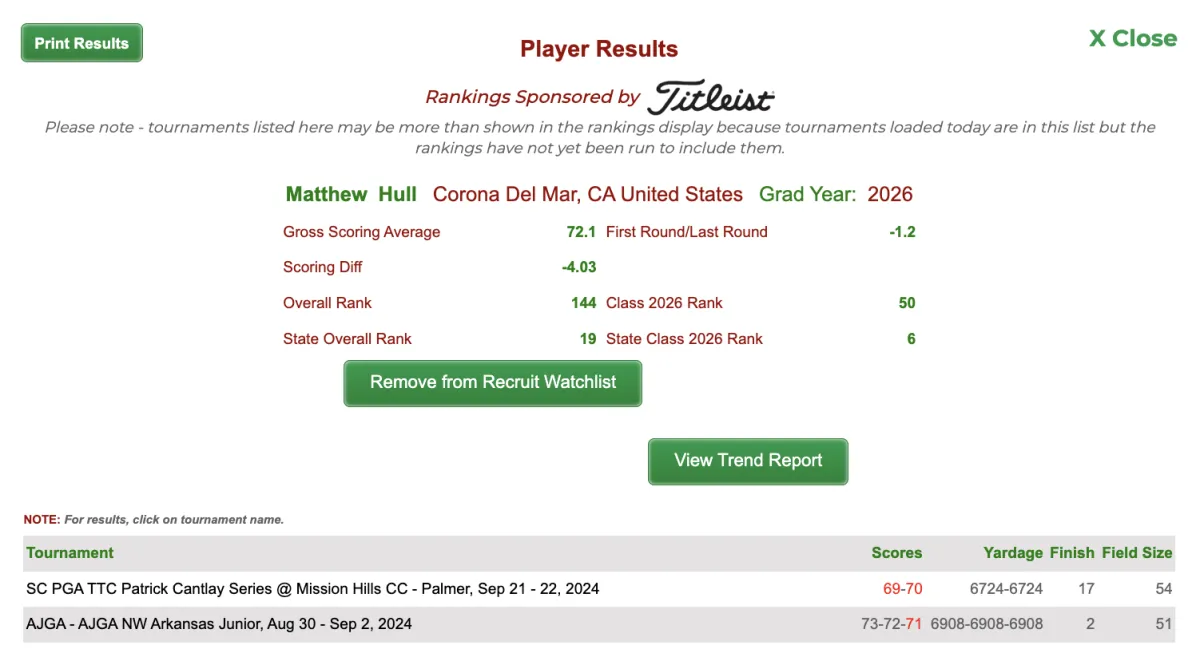
Step 2: Tracking Stats
It's all well and good for me to say your scoring average needs to improve - but it's another thing to tell you how.
Most players just grind on the driving range or take lessons with a swing coach, but very few actually use their data to strategically craft their practice.
Because of that, most players stall out simply because they don't know where to put their focus.
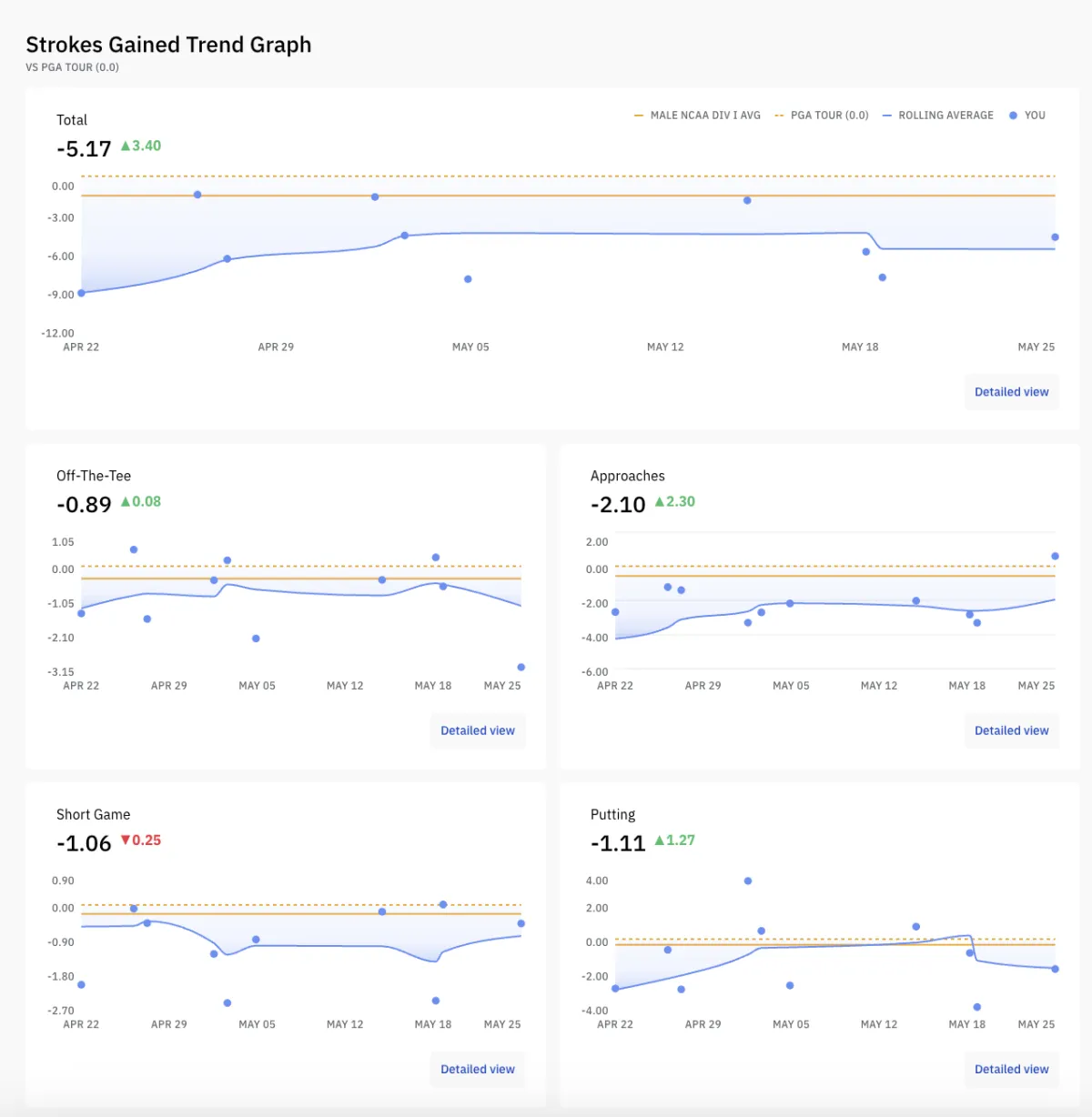
Step 3: Designing Practice
Even if your child knows the areas where they need to improve, if they don't know what they need to do in their practice, they'll struggle.
Over the last half decade I've developed a framework that consistently helps players shoot lower scores month over month. I'll tell your child the best drills to do for their current situation, how many balls to hit, how often to play vs practice, all they'll need to do is go out and execute on it.
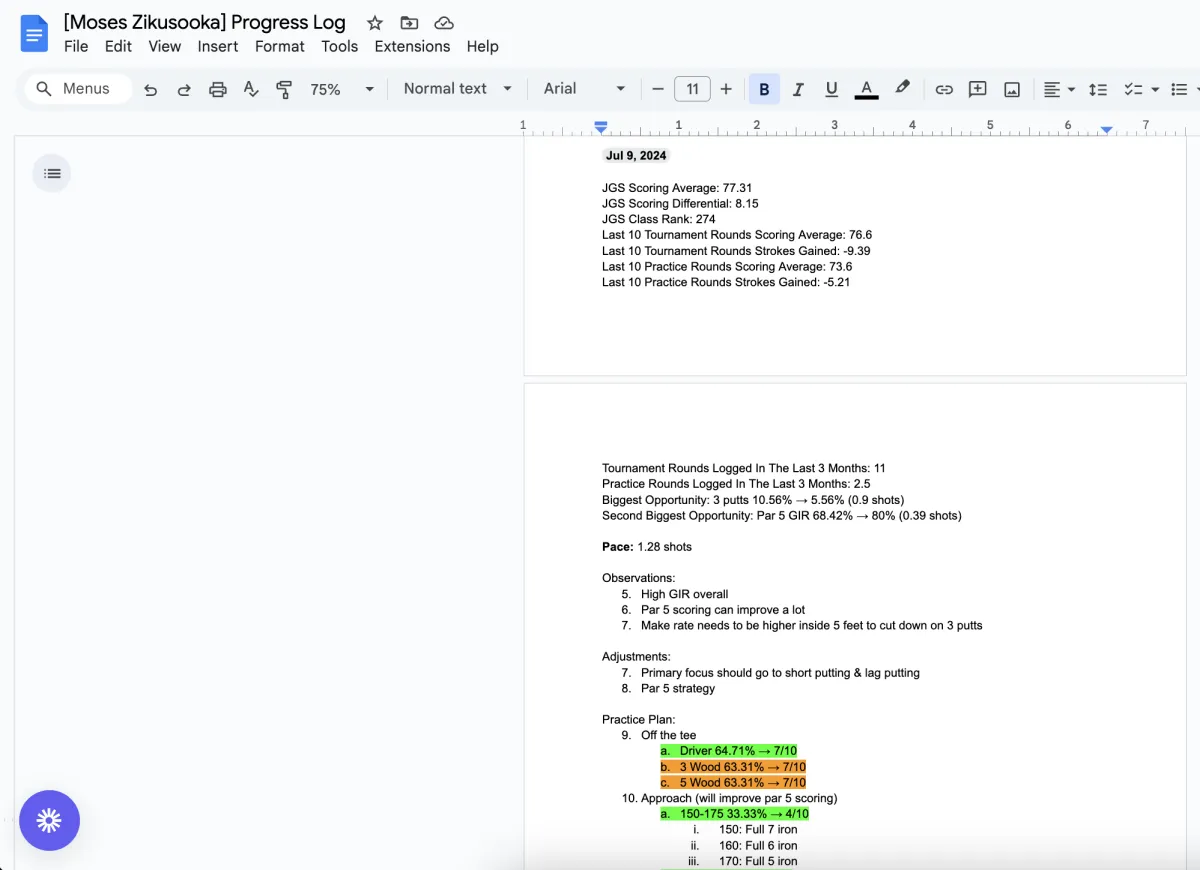
Step 4: Tournament Schedule
If your junior golfer is improving, but they're not playing in the right tournaments, it's almost like it doesn't matter.
When I work with students it's crucial that they're playing in the RIGHT events for their current skill level. There's no one size fits all. AJGA isn't the best for every player. There's a balance based on your location, budget, goals, and current skill level.
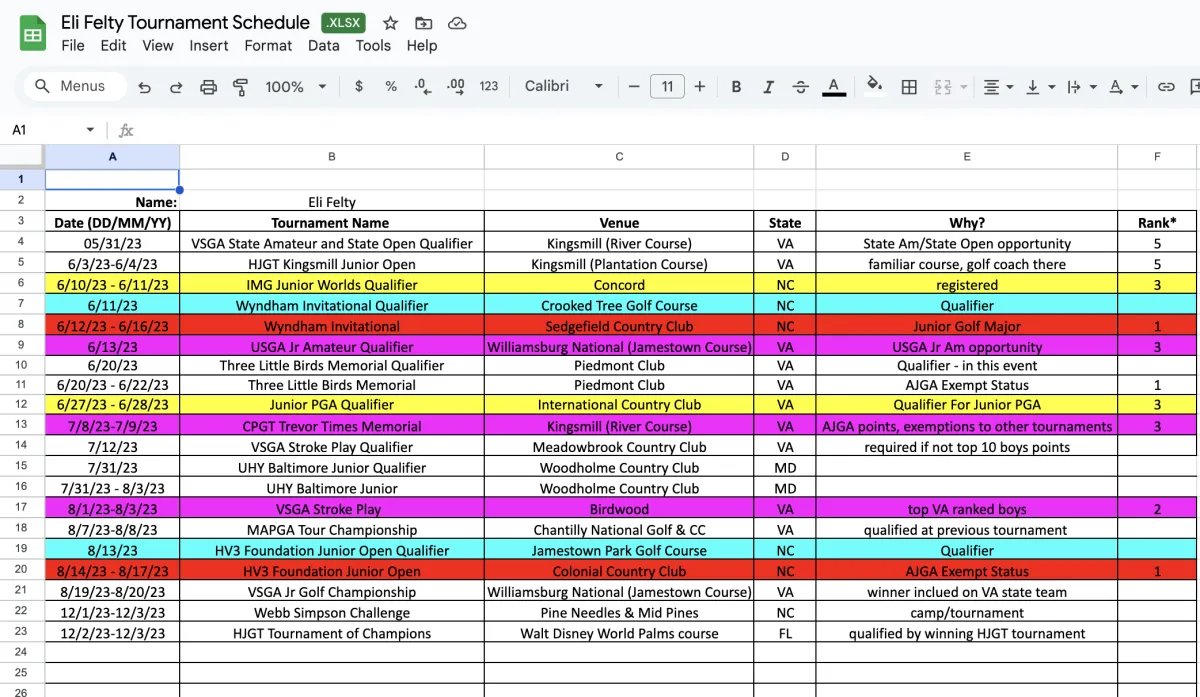
Step 5: Rinse & Repeat
Most players think that they can do lots of work over a short period of time and get massive results, but the reality is improvement in golf takes time.
Once your child has their plan, the key will be executing on it, and updating it over time. As they improve they'll have new problems, and new needs in their practice - we'll address those dynamically as they come up.
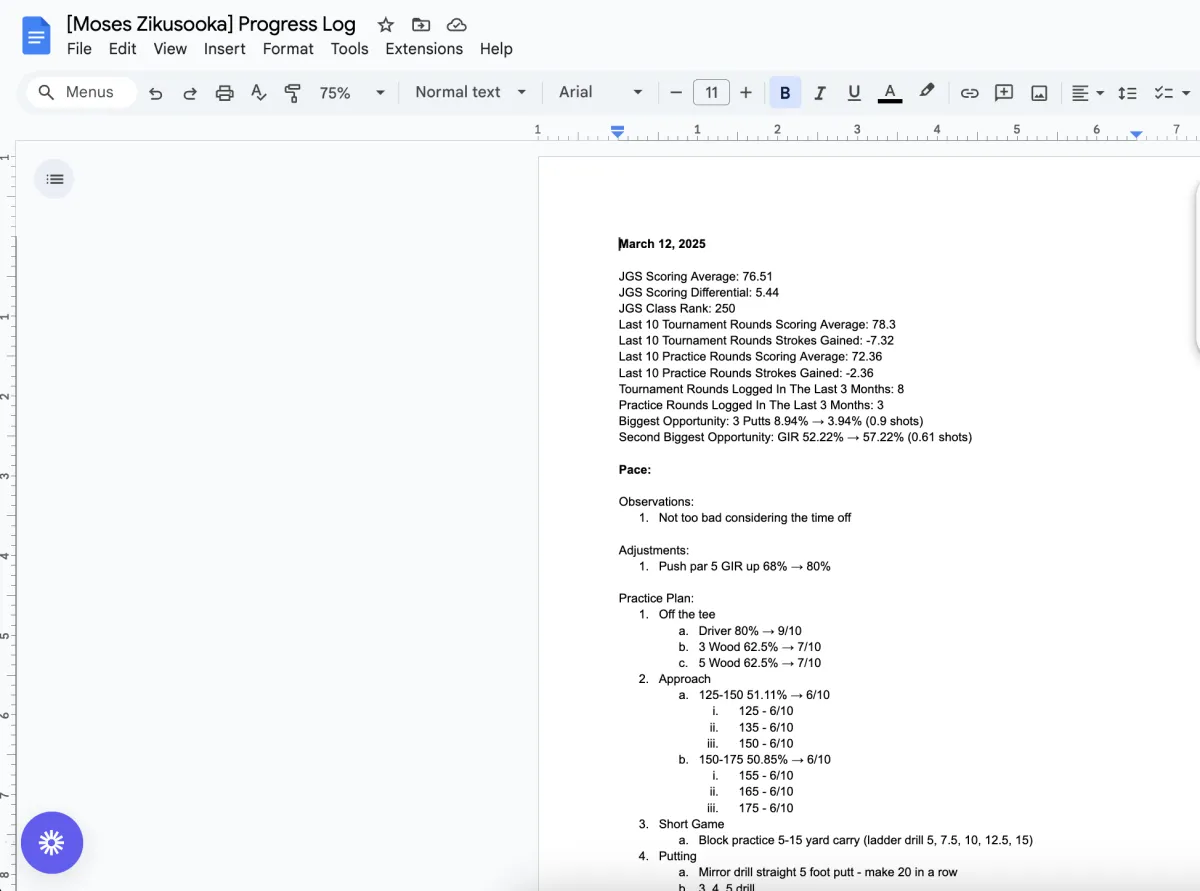
Step 6: Get Recruited
As you can see my process is built on the back of data, but to be clear, the end goal of all of this is to put your child in a position where they don't just get recruited - they can coaches reaching out to them.
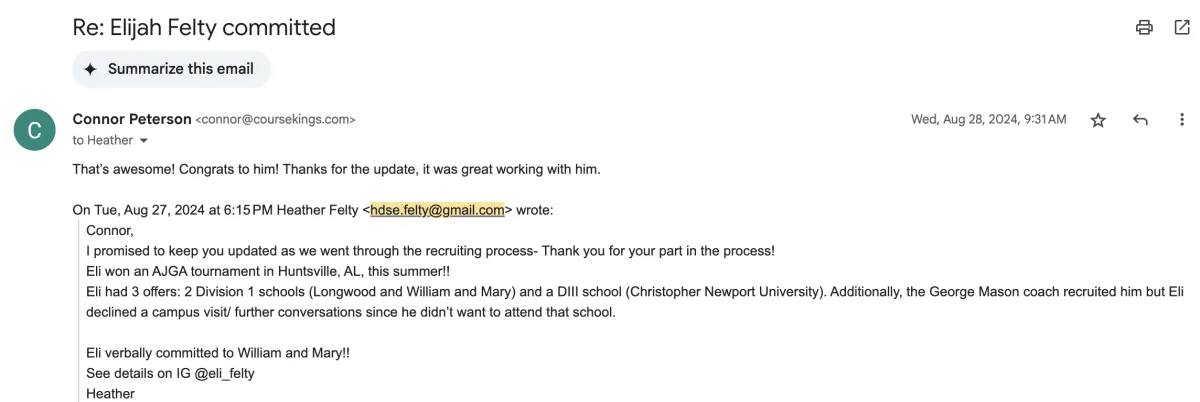
Want this roadmap for your child?
Apply and see if they qualify.
©2024 Stirling Media LLC
